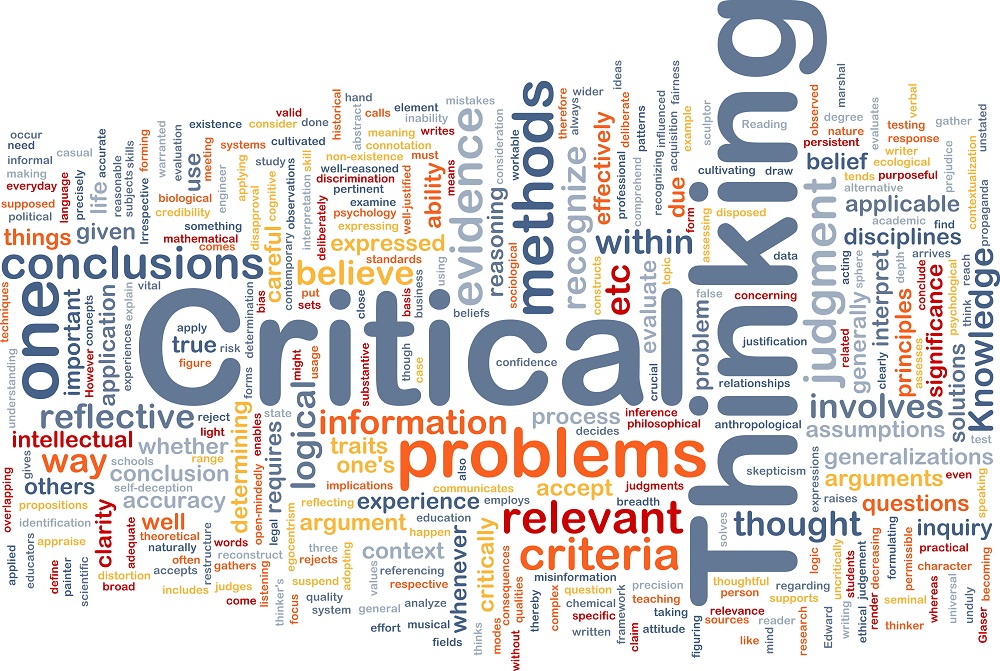The idea of creativity having developmental stages is not new. It has been around for a long time. It is as relevant now as it was in the past. Creativity and innovative outcomes are always needed in business. Concepts that work in reality have great value.
These stages can help you support your client’s creative thinking and outcomes. Successful inventors or researchers have followed through on these phases. The stages are distinctive, although often not usually linear – more iterative. Yet remarkable innovations and breakthroughs follow a similar developmental pattern. Just think of the remarkable creative results achieved by Bill Gates, Charles Darwin, Albert Einstein and Marie Curie.

The Four Stages of Creativity:
The idea of creativity being about a staged process derives from the seminal work of British Psychologist Graham Wallas’ Book ‘The Art of Thought’, which stretches back to the 1920s.
He described four stages:
- Preparation
- Incubation
- Illumination
- Verification
Graham Wall’s work was based on many years of observing and studying accounts of inventors and other types of creative work. Ironically, he needed to go through the four stages of creativity himself to develop his original and insightful theory.
Here are the four stages briefly summarised with real-life examples:
Stage 1: Preparation
The creative process begins with preparation: A process of gathering information and materials. This is an internal process (thinking deeply to generate connections) and also going out into the world and gathering the necessary data, resources, materials and expertise. Ideas never exist in a vacuum. If you are looking to come up with a good idea, feed your brain with input and correct stimuli to work with.
Bill Gates
Think of Bill Gates taking a ‘Think Week’, two times a year. He went to Cedar Forest in the Pacific North-West, residing in hideaway cabin, away from distractions, immersing himself in papers written by Microsoft employees pitching new innovations or potential investments. Sometimes reading continuously for up to 18-hours a day. This was said to be the inspiration behind his ‘Internet Tidal Wave Paper’, in which Bill Gates explained how the internet would ‘change everything’, throwing his company’s weight towards supporting, enhancing and profiting from the internet.
Stage 2: Incubation
Ideas and information need time to marinate in the mind. During this process, the person will need to take their focus off the problem and allow time to rest, engaging purposefully in less cognitively demanding tasks.
Charles Darwin
Think of Charles Darwin walking his fox terrier dog (Polly) along his ‘thinking path’ in the woods of Down House, Orpington (Kent), for four hours daily. Whilst engaging in this activity, he pondered ideas which eventually formed to create the ‘The Origin of Species’- considered the foundation of evolutionary biology.
Stage 3: Illumination
The elusive ‘aha’ moment. After a period of incubation, insights arise and break into our consciousness. The ambiguity becomes crystal clear. The sudden ‘Eureka’ moment comes in the shower when you are cooking or taking a walk. Creating these moments vastly increases the likelihood of solutions presenting themselves.
Albert Einstein
Think of Albert Einstein in Bern, Switzerland, looking at the clock towering over the city. At that moment, Einstein imagined what would happen if the car raced away at the speed of light. He realised quickly that the clock appeared to be stopped since the light could not catch up with the street car. But yet, his clock in the car would continue to beat normally.
This created a breakthrough in Einstein’s thinking. He knew that time would unfold at different rates throughout the universe, depending on how fast you move. Five weeks after this, Einstein published his ground-breaking Theory of Relativity. Transforming our way of looking at the Cosmos in the process.
Stage 4: Verification:
Words get written down, actions are put in place and the idea is made tangible. The person will use further critical thinking to hone and improve on the idea.
Marie Curie
Think of Marie Curie, ‘mother of modern Physics’, and painstaking, methodical investigative work that went into isolating and measuring the previously undiscovered element of radium. Eventually opening up a new avenue of research for which she was awarded two Nobel Prizes, spawning a whole new avenue of research into the treatment of cancer.
James Taylor’s additional stage in creativity
In this talk, James elaborates on the stages described above and breaks them down further into a five-stage model.
His five stages are:
- Preparation
- Incubation
- Insight
- Evaluation
- Elaboration
The Verification stage becomes a two-step ‘Evaluation and Elaboration stage’. James Taylor’s clip goes on to offer a number of important real-life insights into the process of creativity.
As he explains, creativity rarely ‘just happens’, it may feel messy ‘in-the-moment’, but it is better thought of as a process which is purposeful. Under the right conditions, the stages of creativity reveal themselves across all types of human endeavours. Therefore, we should avoid the type of thinking that categorises people as either creative or not. You do not have to be Bill Gates, Charles Darwin, Albert Einstein or Marie Curie. The Four Stages of Creativity takes away some of the mystery and prestigiousness that surrounds the idea of creativity. It exists in all of us, it is possible for anyone to boost their creativity.
Secondly, as mentioned earlier, the stages do not always happen in an orderly, linear manner. Looking more like a zig-zag or ‘iterative’ process. With each stage following a time sequence, which relative to each other goes along the lines of long stage, short stage, short stage, long stage.
The first stage (Preparation) and last stage (Elaboration) being overwhelmingly the most time-consuming. The Insight moment, the bit that is usually recognised as the ‘creative bit’, usually happening very quickly. Although lots of time and energy needs to both precede and follow this moment.
Thirdly, James Taylor goes onto to talk about the creating ‘the better environments’, creating different effects for each stage.
For example, how the preparation stage (absorbing information) is usually best achieved. At this stage, working in a quiet area is usually best. Illumination happening most often when you are doing some kind of low-level activity (for example, in the shower or out walking). Whilst the Evaluation Stage working better in an environment which allows feedback from your peers.
What relevance do ‘The Stages of Creativity’ have in a coaching context?
Occasionally, your clients describe activities or problems that fit with one of the stages of creativity. Most people can attest to creativity not feeling like a linear process but more of a messy one.
Knowing about these stages can then act as a broad road map. Both with respect to expected timescales, the type of thinking required and what environmental conditions are best at each stage.
The ‘Stages of Creativity’ model shows that creativity has two sides. It has a robust quality but also a fragility to it. Creativity takes time, trust and patience. Not something that is naturally compatible with a workaholic culture or a high-achieving drive. In today’s fast-paced, results-driven coaching world, are we in danger of inadvertently thwarting the journey and conditions creativity needs?
Clients facing complex problems need time and the right conditions at the right time, in order to creatively problem-solve. For example, if your client is in the preparation stage of creativity, perhaps what they need next is Bill Gates’ immersive ‘Think Time’. Or what they might need next is actually to take their mind off a problem and engage in low-level cognitive tasks, their own ‘think walk’. Or perhaps they have already had their ‘aha’ moment. Next, they need to hone their critical thinking and test their new ideas by engaging with their audience and gaining feedback from their peers.
Could a Stages of Creativity Model be a helpful concept for you to work with as a coach? It worked for Bill Gates, Charles Darwin, Albert Einstein and Marie Curie; maybe it will work for you…
About us:
We create the space for leaders to step back, think clearly, and navigate complexity with confidence. By sharpening the narrative that drives decisions, teams, and performance, we help leaders move forward with clarity and impact. Our approach blends deep listening, incisive challenge, and commercial focus—strengthening leadership at every level, from business transformation to boardroom decisions.
“We share resources that help coaches deepen their practice and expand their impact. The articles on this site are designed to spark fresh thinking, offer practical tools, and support the continuous growth of coaches at every stage. “
Jude Elliman
Founder
Our Core Approach:
We work with leaders to sharpen their thinking, strengthen their leadership, and navigate complexity with confidence. Our approach is built around three core areas:
Narrative Coaching – Working with the stories that shape leadership, teams, and organisations.
Commercial Focus – Cutting through complexity to drive clear, strategic decisions.
Challenge & Space – Asking the right questions while creating the space to reflect and grow.
Through this, we help leaders drive transformation, align teams, and make high-stakes decisions with clarity and impact.




